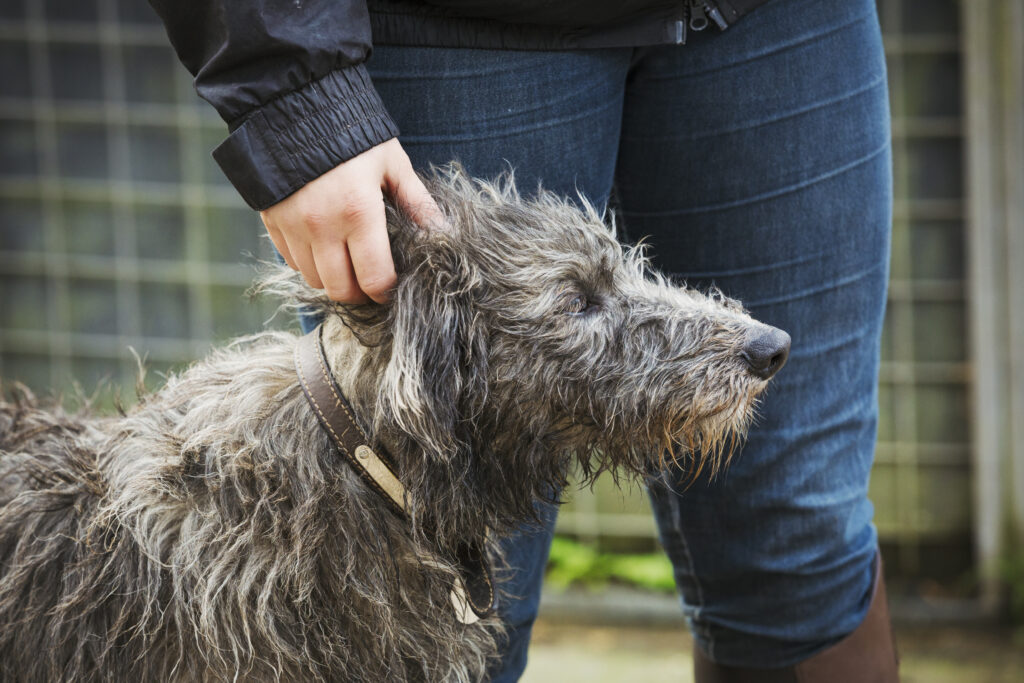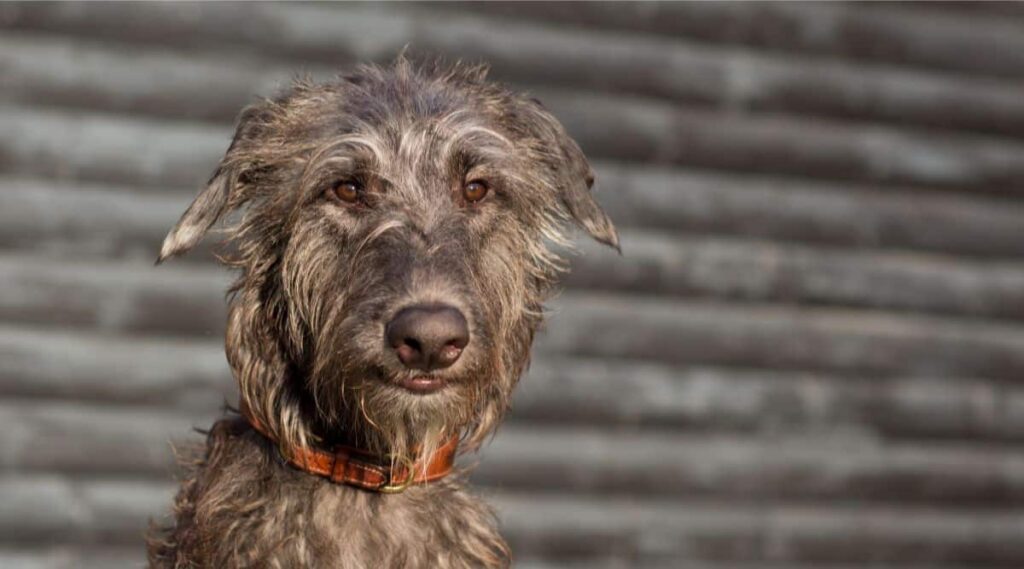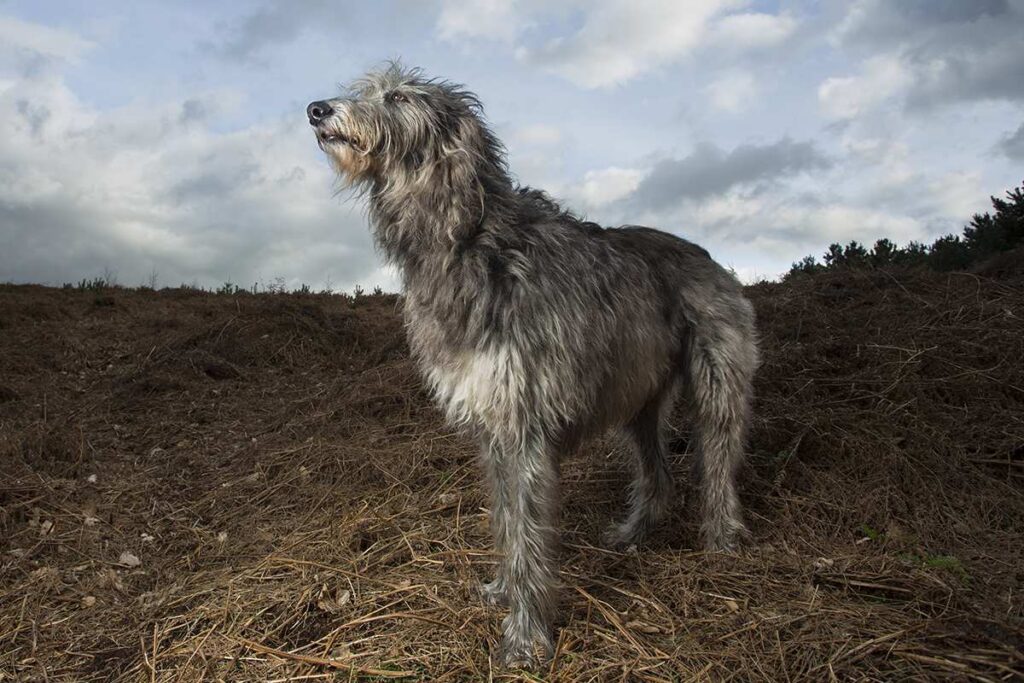Highland Harmony: Effective Training Strategies for Your Scottish Deerhound
Table of Contents
Introduction to Training a Scottish Deerhound
The Scottish Deerhound, a breed of majestic stature and noble bearing, has long captured the hearts of dog enthusiasts worldwide. Known for their gentle demeanor and aristocratic presence, these dogs are more than just pets; they are a symbol of grace and strength. However, owning a Scottish Deerhound comes with a unique set of challenges, particularly when it comes to training. This article aims to provide comprehensive guidance on effectively training a Scottish Deerhound, ensuring they grow into well-mannered, obedient, and happy companions.
Understanding the Scottish Deerhound
Before delving into training techniques, it’s crucial to understand the Scottish Deerhound’s temperament and background. Originating from Scotland, these dogs were bred for hunting and chasing deer, a task that required speed, agility, and independence. These historical traits have shaped their personality, making them both dignified and gentle giants.
The Scottish Deerhound is known for its friendly and affectionate nature. They are incredibly loyal to their family, displaying a calm and loving temperament at home. However, their hunting heritage also means they possess a strong prey drive and independence, which can sometimes translate into stubbornness during training sessions.
Importance of Training
Training is not just about obedience; it’s about communication and building a strong bond between you and your Deerhound. It helps in understanding each other and ensures that your dog can safely and comfortably navigate the world around them. A well-trained Scottish Deerhound is not only a joy to live with but also a responsible member of the canine community.
Training a Scottish Deerhound requires patience, consistency, and an understanding of their unique temperament. They respond best to positive reinforcement techniques, such as praise and treats, rather than harsh corrections. It’s also important to start training early, especially during their puppy years, to establish good habits and prevent any potential behavioral issues.
In the following sections, we will explore various aspects of training a Scottish Deerhound, from basic obedience to dealing with common behavioral challenges. Whether you’re a first-time Deerhound owner or looking to refine your training skills, this guide will provide valuable insights into nurturing a well-behaved and happy Scottish Deerhound.
Basic Obedience Training for Scottish Deerhounds
Training a Scottish Deerhound in basic obedience is the cornerstone of a harmonious relationship between you and your dog. This section will guide you through the essential steps and techniques to ensure your Deerhound not only understands basic commands but also respects you as their leader.
The Foundation of Obedience Training
Start with the basics: teaching your Scottish Deerhound commands like ‘sit’, ‘stay’, ‘come’, and ‘heel’. These commands are not just tricks; they are essential for your dog’s safety and your peace of mind. Remember, Deerhounds are sighthounds, and their instinct to chase can be strong. Basic commands can prevent them from running into dangerous situations.
Positive Reinforcement: Key to Success
Scottish Deerhounds respond best to positive reinforcement. This means rewarding good behavior with treats, praise, or playtime. Avoid harsh corrections as they can damage your relationship and hinder progress. Consistency is crucial – ensure everyone in your household uses the same commands and rewards.
Training Sessions: Short and Engaging
Keep training sessions short, about 10-15 minutes, to maintain your Deerhound’s attention. They are intelligent but can become bored with repetitive or lengthy sessions. Incorporate training into daily activities like meal times or walks for practical learning experiences.
Socialization and Training
Socialization is an integral part of obedience training. Expose your Deerhound to different environments, people, and other animals. This exposure helps them become well-adjusted and less likely to react negatively or aggressively in new situations.
Patience and Understanding
Training a Scottish Deerhound requires patience. They may not respond as quickly as other breeds, but with gentle guidance and understanding, they will learn. Celebrate small victories and remain patient with setbacks.
Conclusion
Basic obedience training is a journey that requires time, patience, and consistency. By following these guidelines, you will lay a strong foundation for a well-behaved Scottish Deerhound. Remember, the goal is to build a bond of mutual respect and understanding between you and your dog.
Puppy Training for Scottish Deerhounds
Training a Scottish Deerhound puppy requires a unique approach that caters to their specific breed characteristics and developmental stages. This section will guide you through the essential aspects of puppy training, ensuring your Deerhound pup grows into a well-behaved and confident adult dog.
Early Socialization: A Critical Step
Socialization is crucial in the early stages of a puppy’s life. Expose your Deerhound puppy to various people, animals, environments, and sounds. This exposure helps them become well-adjusted adults. Positive experiences during this stage can significantly reduce fear and anxiety in the future.
Crate Training: Creating a Safe Haven
Crate training is beneficial for Deerhound puppies. It provides them with a safe and comfortable space of their own. Crate training also aids in housebreaking and prevents destructive behavior when you’re not around to supervise. Introduce the crate gradually, making it a positive experience with treats and comfortable bedding.
Housebreaking: Patience is Key
Housebreaking a Scottish Deerhound puppy can be challenging and requires patience. Stick to a regular schedule for feeding and bathroom breaks. Praise your puppy when they go to the bathroom outside. Accidents will happen; it’s important not to punish them but to calmly redirect to the correct behavior.
Bite Inhibition: Teaching Gentle Play
Puppies explore the world with their mouths, which can lead to nipping. Teaching bite inhibition is crucial. If your puppy nips, give a sharp “ouch” and stop playing momentarily. This teaches them that gentle play continues, but rough play stops.
Basic Commands: Building Blocks of Training
Start teaching basic commands like ‘sit’, ‘stay’, and ‘come’. Use positive reinforcement to encourage your puppy. Keep sessions short and fun. Remember, puppies have short attention spans, so frequent, short sessions are more effective than long ones.
Consistency and Routine
Establish a consistent routine for your puppy. Regular feeding times, potty breaks, and training sessions help your puppy feel secure and aid in faster learning. Consistency in commands and expectations is also crucial for effective training.
Conclusion
Training a Scottish Deerhound puppy is an enriching experience that sets the stage for a lifetime of companionship. With patience, consistency, and positive reinforcement, you can guide your puppy through their formative months, laying the foundation for a well-behaved adult Deerhound.

Socialization for Scottish Deerhounds
Socialization is a pivotal aspect of training Scottish Deerhounds, shaping their behavior and interactions with the world around them. This section delves into effective socialization strategies to ensure your Deerhound grows into a well-adjusted and sociable adult.
The Importance of Early Socialization
Socialization should begin as early as possible, ideally during the puppy stage. This period is crucial for shaping your Deerhound’s reactions and attitudes towards different stimuli, including people, animals, environments, and noises. Proper socialization can prevent fearfulness and aggression, common issues in poorly socialized dogs.
Creating Positive Experiences
Introduce your Deerhound to a variety of experiences in a controlled and positive manner. This includes meeting different types of people, encountering various animals, and exposure to different environments and sounds. Each positive encounter helps build their confidence and reduces anxiety in new situations.
Gradual Exposure
Introduce new experiences gradually to avoid overwhelming your Deerhound. For instance, start with quiet environments before moving to busier ones. Use treats and praise to reinforce positive behavior during these experiences.
Socialization with Other Dogs
Interactions with other dogs are essential for developing social skills. Puppy classes, dog parks, and playdates can be excellent opportunities for your Deerhound to learn appropriate dog-to-dog behavior. However, always supervise these interactions to ensure they remain positive and safe.
Handling Different Situations
Regularly handle your Deerhound, including their paws, ears, and mouth, to prepare them for grooming and veterinary visits. This handling should be gentle and associated with positive reinforcement, like treats or praise.
Ongoing Socialization
Socialization is not just for puppies; it’s a lifelong process. Continue to expose your adult Deerhound to new experiences and maintain their social skills. This ongoing effort helps ensure they remain adaptable and comfortable in various situations.
Conclusion
Effective socialization is key to raising a well-rounded Scottish Deerhound. By exposing them to a wide range of experiences in a positive and controlled manner, you can help them develop into confident, sociable dogs. Remember, patience and consistency are crucial in this process.
Dealing with Common Behavioral Issues in Scottish Deerhounds
Scottish Deerhounds, like any breed, can exhibit certain behavioral issues. Understanding and addressing these behaviors effectively is crucial for a harmonious relationship with your dog. This section explores common issues and provides strategies for managing them.
Prey Drive and Chase Instinct
As sighthounds, Scottish Deerhounds have a strong instinct to chase. This can be challenging, especially in areas with wildlife or busy streets.
- Training: Incorporate recall training into your routine. Use long lines in open spaces to practice recall commands.
- Management: Always keep your Deerhound on a leash in unsecured areas. Provide safe, enclosed spaces for off-leash exercise.
Stubbornness and Independence
Deerhounds are known for their independent nature, which can sometimes be perceived as stubbornness.
- Positive Reinforcement: Use treats, praise, and play to motivate your Deerhound. Find what they love and use it to encourage cooperation.
- Consistency: Be consistent with commands and expectations. Inconsistent rules can confuse your dog and reinforce stubborn behavior.
Separation Anxiety
Some Deerhounds may experience separation anxiety, becoming stressed when left alone.
- Gradual Desensitization: Start by leaving your Deerhound alone for short periods, gradually increasing the time.
- Comforting Environment: Create a safe, comfortable space for your dog when you’re away. Include their favorite toys and bedding.
Jumping Up
Deerhounds might jump up on people as a greeting, which can be problematic due to their size.
- Training: Teach your Deerhound an alternative greeting, like sitting for attention.
- Ignore the Behavior: Don’t give attention when your dog jumps up. Turn away and only give attention when all four paws are on the ground.
Destructive Chewing
Puppies, in particular, may engage in destructive chewing.
- Provide Appropriate Chew Toys: Ensure your Deerhound has access to suitable chew toys.
- Supervision and Confinement: Supervise your puppy and use confinement, like a puppy-proofed room or crate, when you can’t watch them.
Conclusion
Addressing behavioral issues in Scottish Deerhounds requires patience, understanding, and consistent training. By recognizing and proactively managing these behaviors, you can ensure a well-behaved companion and a stronger bond with your dog.
Advanced Training and Activities for Scottish Deerhounds
Scottish Deerhounds, with their athletic build and keen intelligence, are well-suited for various advanced training and activities. Engaging them in these pursuits not only provides mental and physical stimulation but also strengthens the bond between you and your dog. This section explores advanced training options and activities that are ideal for Scottish Deerhounds.
Lure Coursing: Tapping into Natural Instincts
Lure coursing is a sport that mimics the traditional hunting style of sighthounds. A mechanical lure is pulled along the ground at high speeds, simulating prey. This activity is perfect for Scottish Deerhounds, allowing them to exercise their natural chasing instincts in a controlled environment.
- Training: Start with basic recall and obedience training to ensure your dog’s safety during lure coursing events.
- Participation: Look for local clubs or events where your Deerhound can participate in lure coursing.
Agility Training: Physical and Mental Exercise
Agility training involves guiding your dog through a course of obstacles, including jumps, tunnels, and weave poles. It’s an excellent way for your Deerhound to get physical exercise and mental stimulation.
- Training: Begin with basic agility training at home or join an agility class.
- Progression: Gradually introduce more complex obstacles and sequences as your dog becomes more proficient.
Obedience Competitions: Showcasing Discipline and Training
Participating in obedience competitions can be a rewarding experience for both you and your Deerhound. It’s an opportunity to showcase the training and discipline you’ve both worked on.
- Training: Focus on advanced obedience commands and routines required for competition.
- Preparation: Attend local matches or training clubs to prepare for the competitive environment.
Canine Good Citizen (CGC) Program: Promoting Good Behavior
The CGC program is designed to reward dogs who have good manners at home and in the community. It’s a great way to demonstrate your Deerhound’s training and temperament.
- Training: Work on the ten skills required for the CGC test, including accepting a friendly stranger, sitting politely for petting, and walking through a crowd.
- Certification: Once ready, take the CGC test through a certified evaluator.
Tracking and Scent Work: Engaging the Nose
While known for their sight, Deerhounds can also enjoy scent-based activities. Tracking and scent work can be a fun way to engage their sense of smell.
- Training: Start with simple scent games and tracking exercises.
- Advancement: Progress to more complex scent work challenges or consider participating in scent work competitions.
Conclusion
Incorporating advanced training and activities into your Scottish Deerhound’s routine offers numerous benefits, including enhanced physical fitness, mental
stimulation, and a deeper bond between you and your dog. These activities cater to their natural instincts and abilities, providing a fulfilling and enriching experience for both of you. Remember, the key to success in any advanced training or activity is patience, consistency, and positive reinforcement.
Nutrition and Exercise for Scottish Deerhounds
Proper nutrition and exercise are fundamental for the health and well-being of Scottish Deerhounds. This section will provide insights into the dietary needs and exercise routines best suited for this breed, ensuring they maintain optimal health and vitality.
Understanding the Nutritional Needs
Scottish Deerhounds require a balanced diet rich in quality nutrients to support their large size and active lifestyle.
- Protein and Fat: High-quality protein and fats are essential for muscle development and energy. Look for foods with real meat as the primary ingredient.
- Carbohydrates: Complex carbohydrates provide sustained energy. Sources like brown rice, vegetables, and whole grains are beneficial.
- Vitamins and Minerals: Ensure the diet includes essential vitamins and minerals to support bone health, digestion, and immune function.
- Portion Control: Monitor portion sizes to prevent obesity, a common issue in large breeds. Adjust portions based on activity level and age.
Exercise Requirements
Scottish Deerhounds are athletic dogs that require regular exercise to maintain their physical and mental health.
- Daily Exercise: Aim for at least an hour of exercise daily. This can include walks, runs, or play sessions in a securely fenced area.
- Mental Stimulation: Incorporate activities that stimulate their mind, such as training sessions, puzzle toys, or scent games.
- Avoid Overexertion: Be mindful of overexertion, especially in puppies whose bones and joints are still developing. Gradually increase exercise intensity as they grow.
- Safe Environments: Exercise your Deerhound in safe, enclosed areas to prevent them from chasing after wildlife or running into danger.
Special Considerations
- Bloat Awareness: Deerhounds are susceptible to bloat. Avoid vigorous exercise immediately before and after meals and consider feeding smaller, more frequent meals.
- Joint Health: Support joint health with appropriate supplements, especially as they age. Regular, moderate exercise can help maintain joint mobility.
Conclusion
Balancing nutrition and exercise is key to a healthy and happy Scottish Deerhound. A well-thought-out diet coupled with regular, appropriate exercise will ensure your Deerhound thrives both physically and mentally. Always consult with a veterinarian to tailor the diet and exercise plan to your dog’s specific needs.
Overcoming Training Challenges with Scottish Deerhounds
Training a Scottish Deerhound can present unique challenges due to their independent nature and breed-specific traits. Understanding and effectively addressing these challenges is crucial for successful training. This section offers strategies to overcome common training hurdles with Scottish Deerhounds.
Addressing Independence and Stubbornness
Scottish Deerhounds are known for their independent streak, which can sometimes be mistaken for stubbornness during training.
- Positive Reinforcement: Utilize positive reinforcement techniques. Rewards like treats, praise, and play can motivate your Deerhound and make training more appealing.
- Patience and Consistency: Be patient and consistent in your training approach. Repeating commands and maintaining consistent rules are key to overcoming their independent nature.
- Engaging Training Sessions: Keep training sessions short, fun, and varied to hold their interest. Incorporate games and activities that they naturally enjoy.
Managing Distractions and Prey Drive
The strong prey drive of Scottish Deerhounds can lead to distractions during training, especially outdoors.
- Controlled Environments: Start training sessions in a controlled environment with minimal distractions. Gradually introduce more challenging environments as your dog becomes more focused.
- Recall Training: Invest time in recall training. This is crucial for managing their prey drive and ensuring their safety.
- Leash Training: Practice leash training regularly. A well-trained Deerhound on a leash is safer and more manageable, especially in areas with wildlife or traffic.
Building Focus and Engagement
Some Deerhounds may show a lack of focus during training sessions, which can be mistaken for disinterest or disobedience.
- Short and Dynamic Sessions: Keep training sessions short and dynamic to maintain their interest. Long, repetitive sessions can lead to disengagement.
- Use High-Value Rewards: Identify high-value rewards that your Deerhound finds irresistible. Use these rewards strategically to capture and maintain their attention.
- Interactive Training Methods: Incorporate interactive training methods like clicker training or agility exercises to make learning more engaging.
Conclusion
Training a Scottish Deerhound can be challenging, but with the right approach, it is both rewarding and enjoyable. Understanding their breed-specific traits, using positive reinforcement, and maintaining patience and consistency are key to successful training. Remember, every Deerhound is an individual, and adapting your training methods to suit their personality will yield the best results.
Conclusion
Training a Scottish Deerhound is a journey filled with unique challenges and rewarding milestones. These majestic dogs, with their gentle demeanor and independent nature, require a patient and understanding approach to training. By embracing their characteristics and utilizing positive reinforcement techniques, owners can develop a strong, respectful bond with their Deerhounds.
Remember, the key to successful training lies in consistency, patience, and adaptability. Whether it’s basic obedience, advanced training, or addressing specific behavioral issues, each step in the training process is an opportunity to deepen your understanding and connection with your Scottish Deerhound. Engaging them in appropriate exercise and activities not only enhances their physical well-being but also their mental health.
As you embark on this training journey, keep in mind that every Scottish Deerhound is an individual with its own personality and quirks. Celebrate the small victories, learn from the challenges, and enjoy the unique experience of living with this noble breed. With time and dedication, your Scottish Deerhound will not only be a well-trained companion but also a cherished member of your family.
Frequently Asked Questions
Are Scottish Deerhounds easy to train?
Scottish Deerhounds can be moderately easy to train, but they do have an independent nature. They respond best to positive reinforcement techniques like treats and praise. Patience and consistency are key in training them, as they may not be as immediately responsive as some other breeds.
How do I manage my Scottish Deerhound’s prey drive during training?
Managing a Deerhound’s prey drive involves consistent recall training and keeping them on a leash in unsecured areas. Start training in low-distraction environments and gradually introduce more challenging scenarios. Always ensure a safe, enclosed space for off-leash activities.
Can Scottish Deerhounds participate in dog sports?
Yes, Scottish Deerhounds can excel in dog sports, especially those that involve running and agility, like lure coursing and agility trials. These activities are great for their physical and mental stimulation and can be a fun way to bond with your dog.
What is the best way to socialize a Scottish Deerhound?
The best way to socialize a Scottish Deerhound is to expose them to a variety of people, animals, and environments from a young age. Positive experiences during puppyhood are crucial. Continue socialization throughout their life to ensure they remain well-adjusted.
How much exercise does a Scottish Deerhound need?
Scottish Deerhounds need regular exercise to maintain their health and happiness. They should have at least an hour of physical activity each day, which can include walks, runs, and playtime in a securely fenced area. Remember to adjust exercise routines to their age and health status.
About Matthew
Matthew is a dedicated author at Dress Up Your Pup, where he combines his passion for fashion with his love for our four-legged friends. With years of experience as a long-time volunteer at his local humane society, Matt brings a unique blend of expertise in canine care and style trends. His articles aim to inspire dog owners to find the perfect style for their furry companions while emphasizing comfort and safety. When he's not writing, Matt can be found at the humane society, helping dogs find their forever homes. Follow Matt to stay updated on the latest in dog fashion and for tips on pet care.



